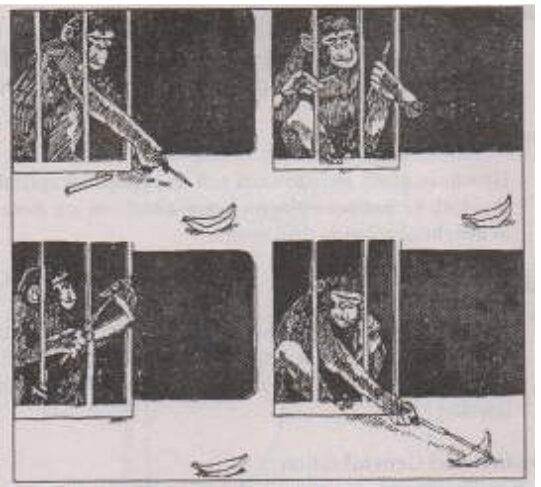Gestalt Theory: Cognitive psychologists tried to view learning as a more deliberate and conscious effect of the individual rather than simply the product of mechanisms such as habit formation or the stimulus response machine. According to him, in the process of learning, the learner does not simply receive stimuli or react to them. But certainly does process i.e. interacts with what he receives and does something about it and his reaction is determined by that processing.
Thinking along these lines, a group of German psychologists called Gestaltists and primarily Wolfgang Köhler introduced a learning theory called Insightful Learning. Gestalt is a German noun with no English equivalent. The closest English translation of Gestalt is configuration or more simply “organize d whole”. The basic idea of the theory is that something can be understood not by studying its component parts but by studying the totality or completeness.

From a practical point of view, Gestalt psychology is primarily concerned with the nature of perception. According to this, a person perceives something as a whole while behavioral and stimulus response theorists define perception to make it analogous to taking a photograph. He believes that meaning sometimes comes before meaning and considers these two acts as separate.
Gestalt psychologists attempted to explain learning as a purposeful, exploratory, and creative enterprise rather than a process of trial and error or a simple stimulus response mechanism. A learner, while learning, always looks at the situation holistically and often takes appropriate decisions intelligently by observing and evaluating various relationships.
Köhler (1925) first used the term insight to describe the learning of his apes. During the period 1913–1917, he conducted several experiments on chimpanzees in the Canary Islands and included his findings in his book (ibid). In one experiment, Kohler placed the chimpanzee Sultan inside a cage and a banana was hung from the ceiling of the cage. A box was kept inside the cage, the chimpanzee tried to reach the banana by jumping but could not succeed. Suddenly he got an idea and placed the box just below the hanging banana and used it as a jumping platform.
Although Kohler thinks that practical learning occurs in lieu of a sudden ‘aha’ or electric shock, he has found that it depends on factors such as
Experience: Previous experience helps in practical solution of the problem. No child can solve modern mathematical problems unless he is thoroughly familiar with its symbolic language.
Intelligence Practical solutions depend on the basic intelligence of the learner. The more intelligent a person is, the greater his insight.
Learning Situation How insightfully a person will respond depends on the situation in which he is placed. Some situations are more amenable to practical solutions than others.
Individual Effort Practical learning has to go through the process of trial and error but this stage does not last long, these initial efforts as simple trial and error mechanism open the way for practical learning.
Reception and generalization Having obtained a practical solution to a particular type of problem, one tries to apply it to another situation on the basis of the same type of solution. The solution found in one situation helps him to react intelligently in another similar situation.